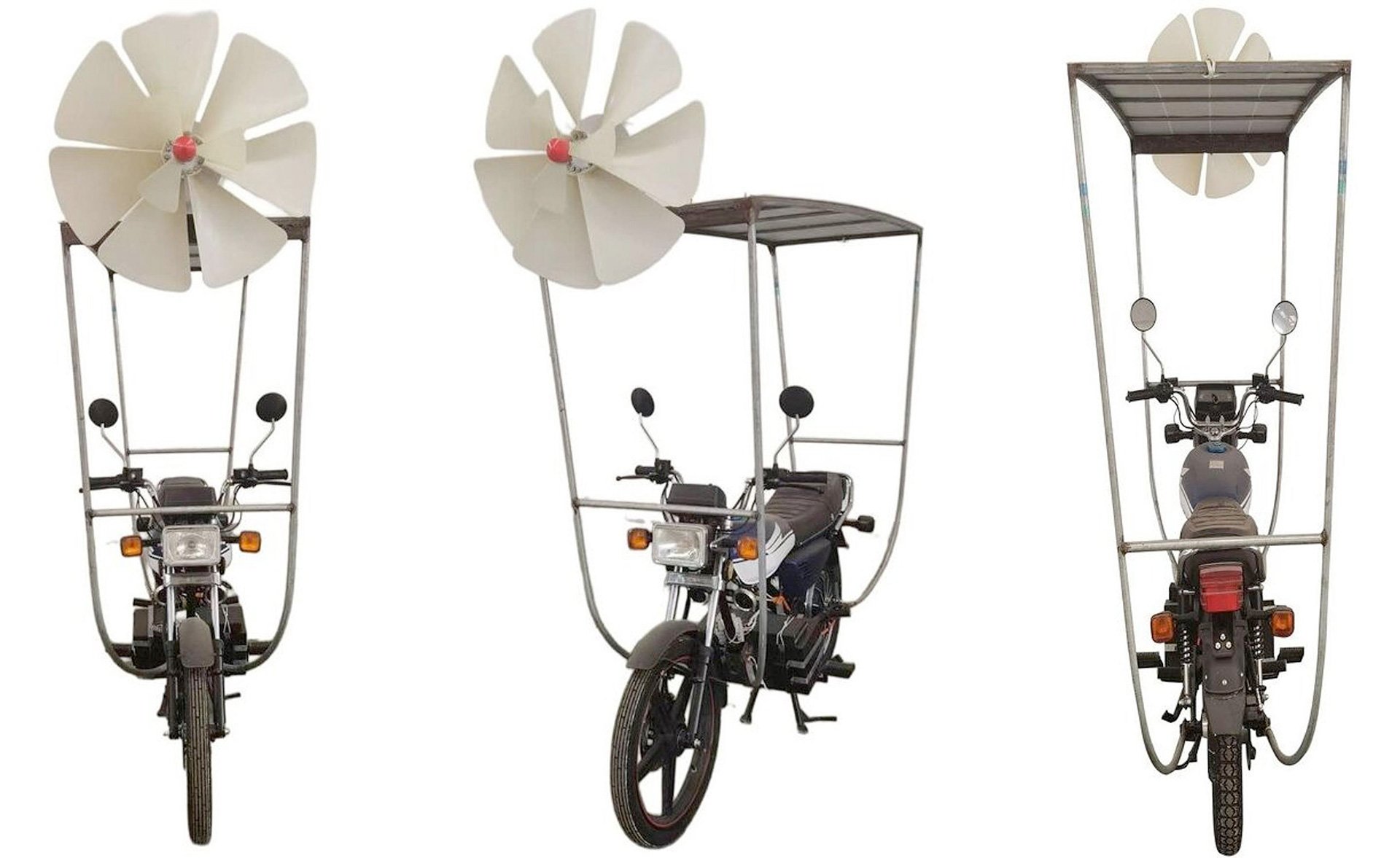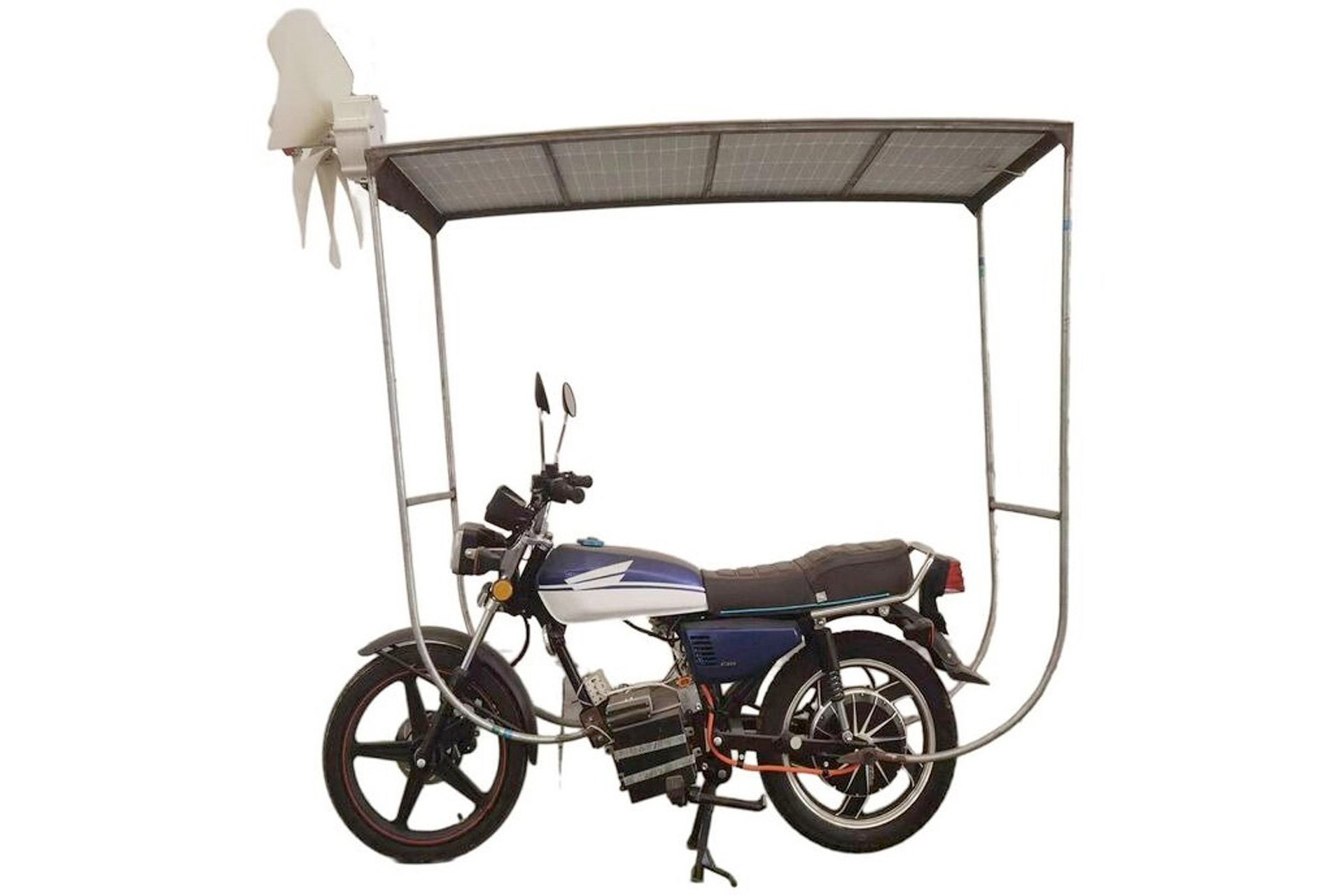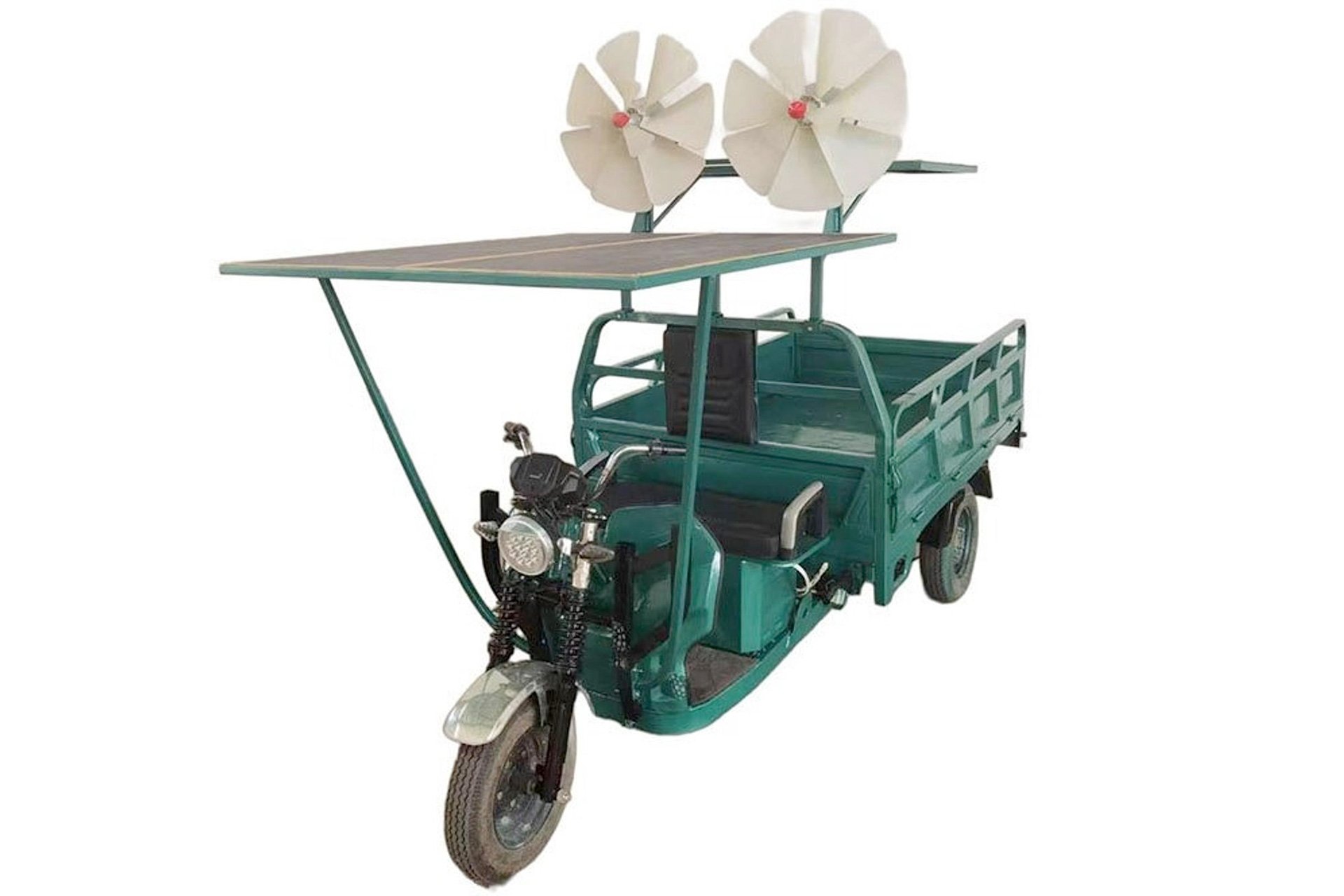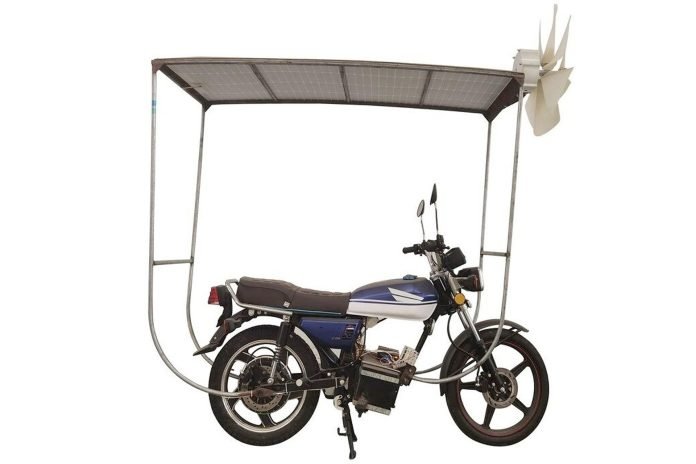At first glance, the CG electric motorcycle from Chinese manufacturer YongLE Risheng may seem like an elaborate April Fools’ joke. However, despite its unconventional appearance, this vehicle is genuinely available for purchase and represents an interesting attempt at integrating renewable energy into personal transportation.
YongLE Risheng, specializing in vehicles powered by renewable energy, has created the CG by significantly modifying what looks like a Honda CG125 frame. The motorcycle is equipped with a 30-Ah lithium-phosphate battery connected to a 1500W electric motor, providing adequate power for basic commuting. Perhaps the most distinctive feature of this motorcycle is its overhead roof structure, fitted with 250W solar panels and an integrated wind turbine mounted directly above the rider.
In terms of performance, the specifications provided by YongLE claim a modest yet practical capability for urban and suburban riding. The CG is reported to achieve a maximum speed of 37 mph (59 km/h), with a standard cruising range between 50 to 75 miles (approximately 80 to 120 km). Notably, it can cover around 31 miles (50 km) on renewable wind and solar energy alone. Additionally, the motorcycle supports conventional plug-in charging, requiring between six to eight hours for a full recharge.
However, potential buyers should approach these numbers cautiously, as there appears to be no available evidence demonstrating real-world performance or verified tests. The motorcycle’s drive system includes a three-speed transmission complemented by disc brakes on both wheels, ensuring relatively stable handling. Suspension duties are managed by a telescopic fork at the front and twin hydraulic shocks at the rear, promising a comfortable enough ride.

Despite the elaborate addition of solar panels and a wind turbine, the CG maintains a relatively lightweight build, coming in at a claimed 293 pounds (133 kg). This is particularly notable given the added structural elements necessary to support these renewable energy components, anchored from the motorcycle’s chassis and rear axle.
Safety and regulatory acceptance outside of China remain significant question marks, primarily due to the wind turbine placement. Positioned directly above the rider, the turbine may represent a hazard to pedestrians and riders alike, especially in crowded urban settings. This unusual configuration is likely to face scrutiny from transportation safety regulators in international markets.

In addition to the CG, YongLE Risheng’s catalog includes diverse renewable energy vehicles, ranging from electric boats and compact electric vehicles to solar-powered golf carts. Another intriguing model in their lineup is the YLRS Fengchi160, a hybrid motorbike-flatbed three-wheeler sporting two wind turbines alongside solar power.

While pricing details are currently unavailable, the YongLE CG highlights the creative lengths engineers can go to—even if practicality and market acceptance remain to be seen.
Source: YongLE Risheng



